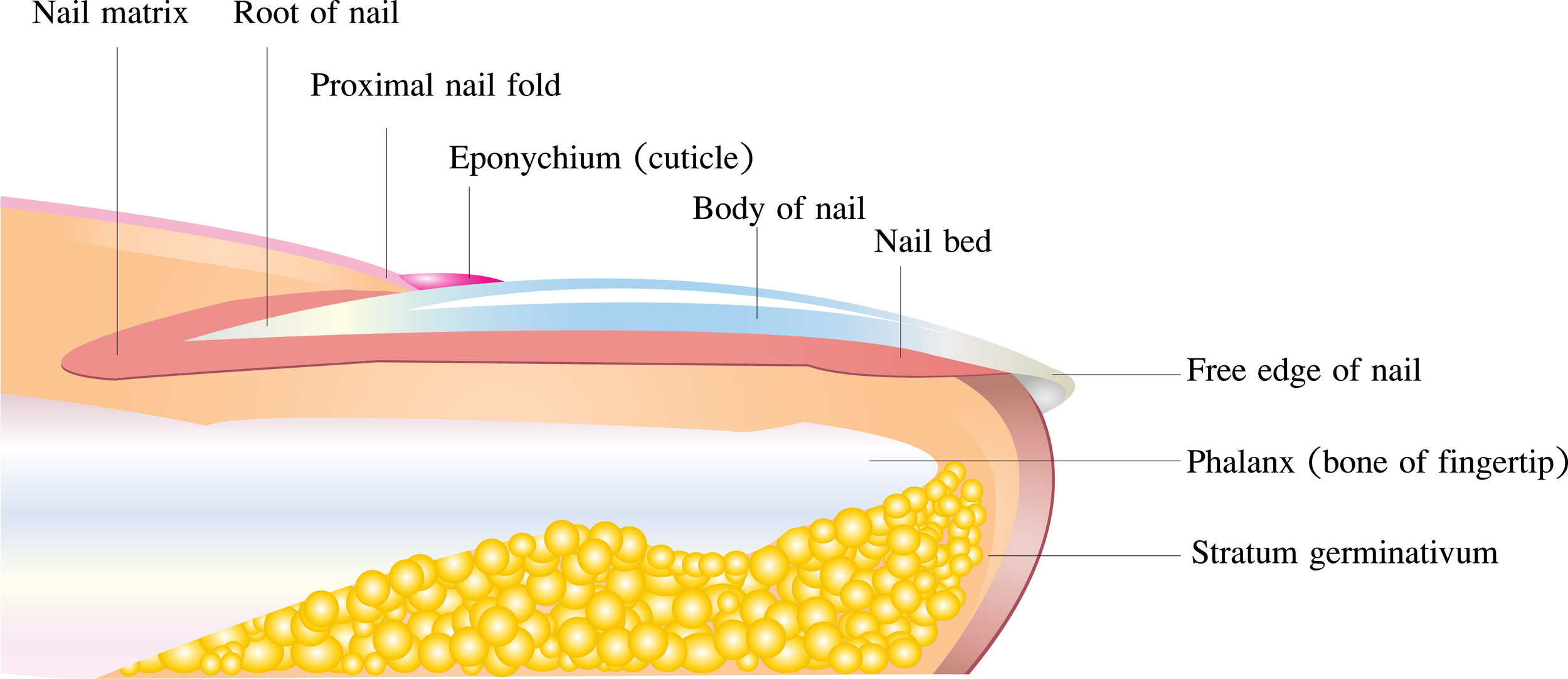Have you ever jammed your finger in a car door? Mis-fired with a hammer and taken out your thumb rather than that nail you intended to hit? There are lots of structures at the tip of the finger that can be damaged with these types of injuries. One that is often overlooked or taken for granted is an injury to your fingernail - a surprisingly complex piece of anatomy at the top of each of your fingers.
What are nails and what do they actually do?
Nails are hard, protective structures made up of a strong protein called keratin. While most of us are familiar with our nail plates (the visible part of the nail), the fingernail unit actually consists of several parts. This includes:
the nail bed (the skin beneath the nail plate)
the nail folds (the skin folds that frame the nail on each side)
the cuticle (the overlapping tissue at the base of our nail)
the nail bed (the skin beneath the nail plate)
The role of a healthy nail is to protect the bone at the tip of your finger and the surrounding soft tissues from injury. It also helps with fine motor control, because it provides counter pressure when we use the tip of our finger pulp to pinch and squeeze.
Although not directly supplied with sensation, fingernails do have a role in increasing the sensation of our fingertips. Finally, did you know nails actually function as tools? They allow us to scrape and cut. Think of how much trouble you’d have getting a splinter out with your finger if you didn’t have a nail!
What is the nail bed and why is it important?
In order to have nice strong, healthy nails, we need healthy and intact nail beds - . The main role of the nail bed is the generation of new nail as well as adherence of the nail to the finger. If the nail bed is damaged and is not properly treated, complications can include:
Loss of the nail plate
Soft tissue infection
Ongoing deformed regrowth of new nail
Non-adherence of new nail
Splitting of the nail
Hook Nail
Injuries to the Nail bed:
The most common type of nail injury is a crush injury. This occurs when the fingertip is crushed between two objects or under heavy load and may result in a subungual haemotoma - a bruise between the finger and the nail - as well as associated tendon, bony and ligament injuries.
Other types of injuries causing damage to the nail and nail bed include:
Lacerations
when the finger is cut firmly enough to break through the nail plate (e.g. with a sharp knife or power tool)
Avulsions
When the nail is ripped off the finger as a result of a crush or traction injury
Punctures
When a sharp object pierces through the nail plate
How to fix an injury to the nail bed
While seemingly uncomplicated, nail bed injuries that are severe enough can often warrant surgical intervention. Some common treatment options can include:
Puncturing a small hole in the nail to drain underlying blood/bruising, to relieve pressure and provide pain relief
Removal of the nail
Surgical nail bed repair and application of false nail to aid healing
Grafting for loss of part or all of the nail bed
Management of associated conditions - tendon, bone and/or or ligament injuries
Whether you require surgery or not, hand therapy can help manage the pain and discomfort that often ensues following a nail bed injury, as well as offer support and protection to the healing structures.
We are able to mould splints for protection and comfort, manage swelling, assist with dressings and wound management, improve strength and range of motion and prevent the finger from becoming extra sensitive following injury.
Reference List:
Lineage Medical (2020). Nail Bed Injuries. Retrieved 9 Jan 2020, from https://www.orthobullets.com/hand/6109/nail-bed-injury


